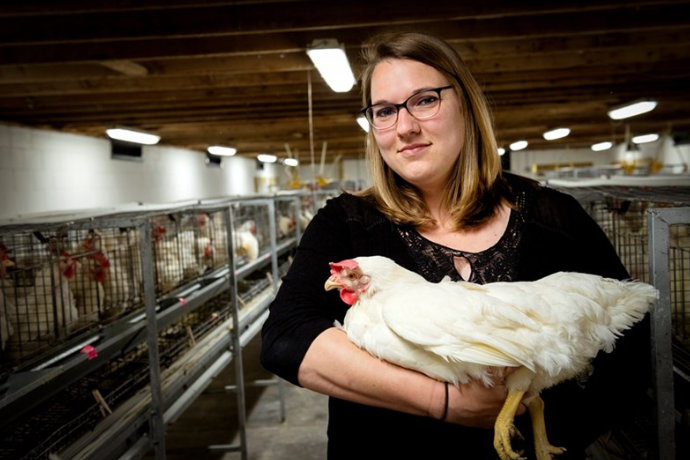FAYETTEVILLE, ARK. – Researchers at the University of Arkansas started looking at water efficiency in the poultry industry by developing chickens that can possibly live on limited water.
Sara Orlowski, assistant professor of poultry science at Arkansas, recently began her part of a five-year, multi-institution project that received $9.9 million from the US Department of Agriculture National Institute of Food and Agriculture grant. The grant was awarded through NIFA’s Agriculture and Food Research Initiative.
The project director for the research is Walter Bottje, professor of poultry science at the Arkansas Agricultural Experiment Station, the research arm of the University of Arkansas System Division of Agriculture.
The project, titled “Empowering the US Broiler Industry for Transformation and Sustainability,” will also include Cornell University and research expertise from at least five other university systems. Orlowski’s project is also supported by a grant from Cobb-Vantress Inc., a Siloam Springs-based primary broiler breeder company.
During her research, Orlowski will look at the fourth generation of genetic selection for two groups. She will breed one group for higher water efficiency and one for lower water efficiency. A third breeding group will serve as a control group.
“In the first group, we’re selecting for improved water conversion ratio,” she said. “How much water do they drink for a pound of gain? So far, body weight gain has remained consistent. There has been no impact on feed conversion.”
Orlowski added that the group selected for lower water efficiency is consuming more water without any improvements in weight gain.
“Sara has developed a neat convergence,” Bottje said. “After three generations of broilers selected for higher or lower water conversion, her random bred control population is right in the middle.”
With her research, Orlowski will look at whether changing the broiler genetics for water efficiency will have any other physiological effects. This will include changes in gut health and integrity, changes in breast meat yields, or if there are any other impacts on the birds’ health and wellbeing.
“I want to see if we’re losing anything in exchange for the gains in water use efficiency,” Orlowski said.
Her work on this project began when she was a PhD student and working as a research associate in the department of poultry science in Arkansas. Before she could select for water efficiency, she had to be able to measure how much water each bird was consuming.
Orlowski was part of a graduate student research team that developed a novel low-flow water monitoring system for use with poultry. It gave her an essential tool to measure water intake for individual birds in real time.
Bottje noted this is the first he knows of that anyone has looked at improving water use efficiency in poultry.


